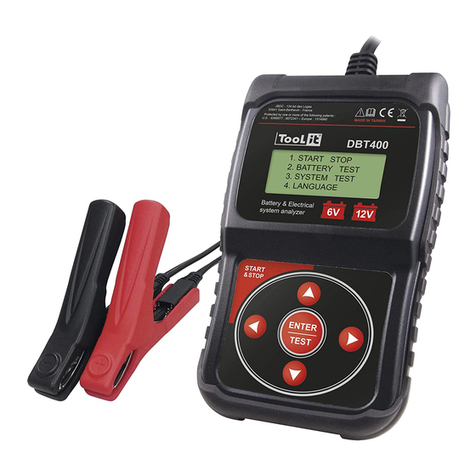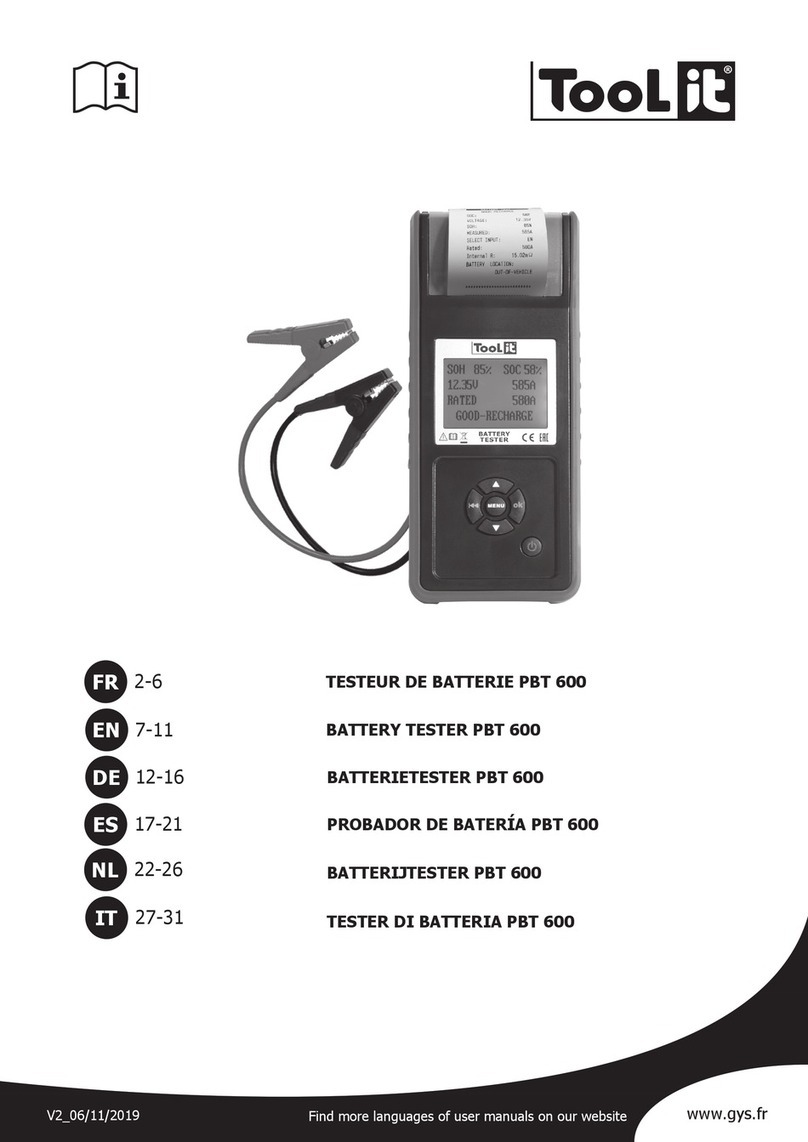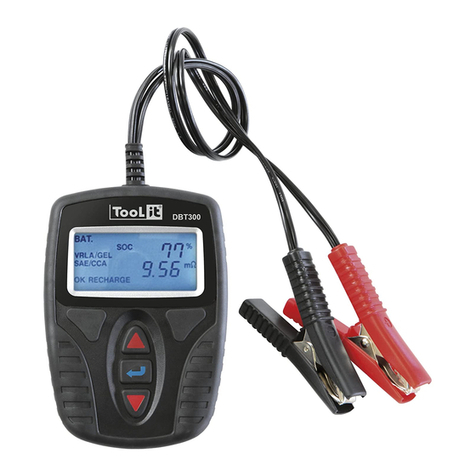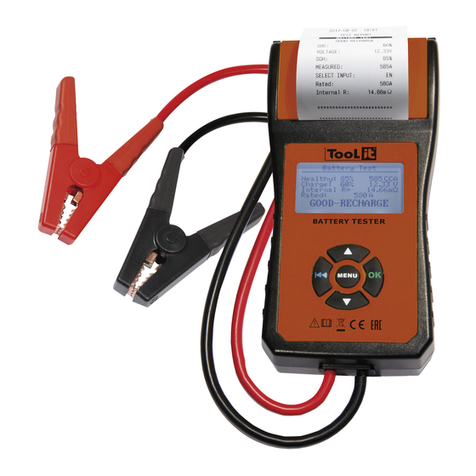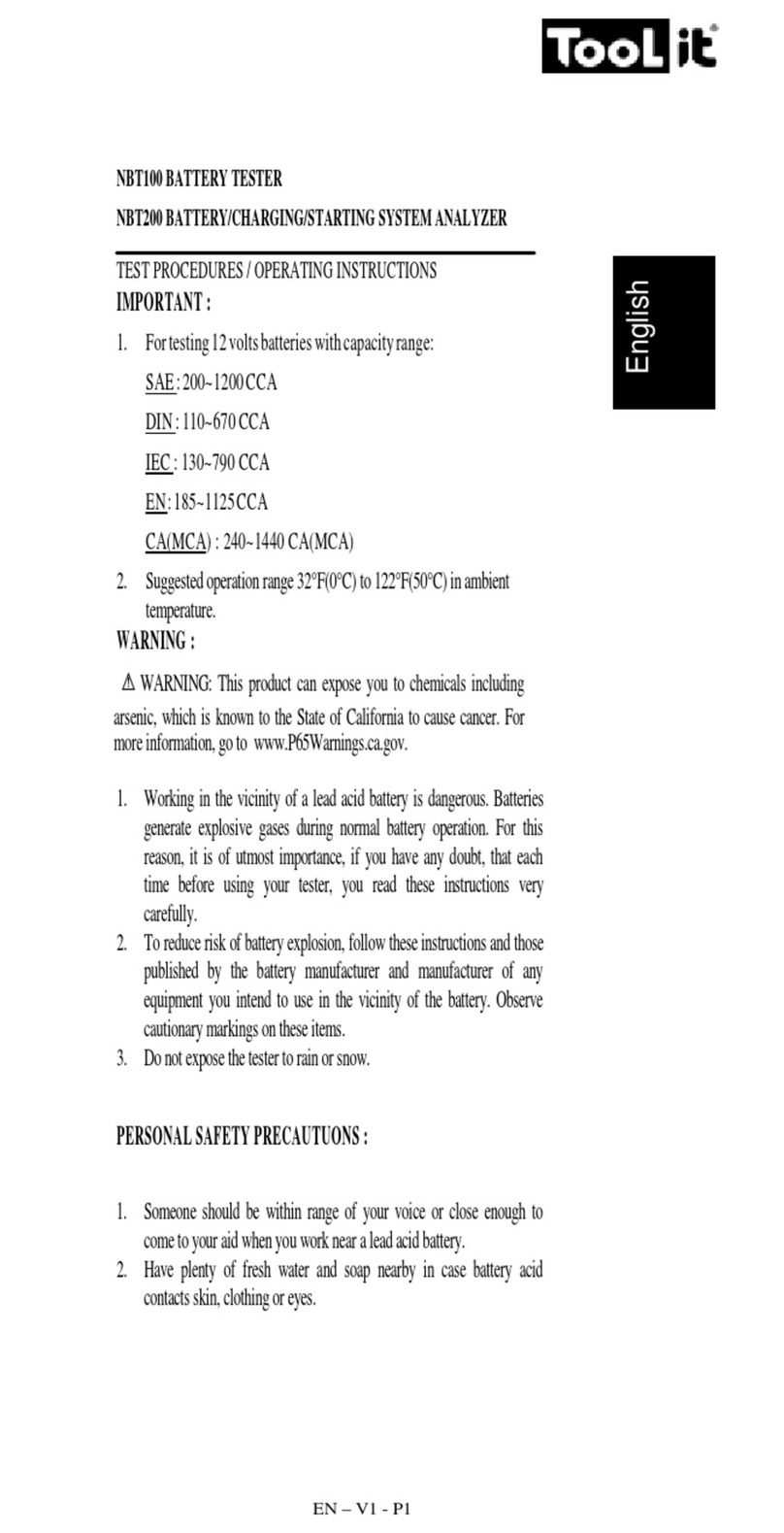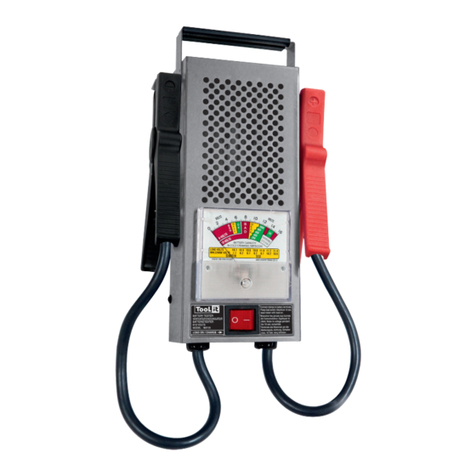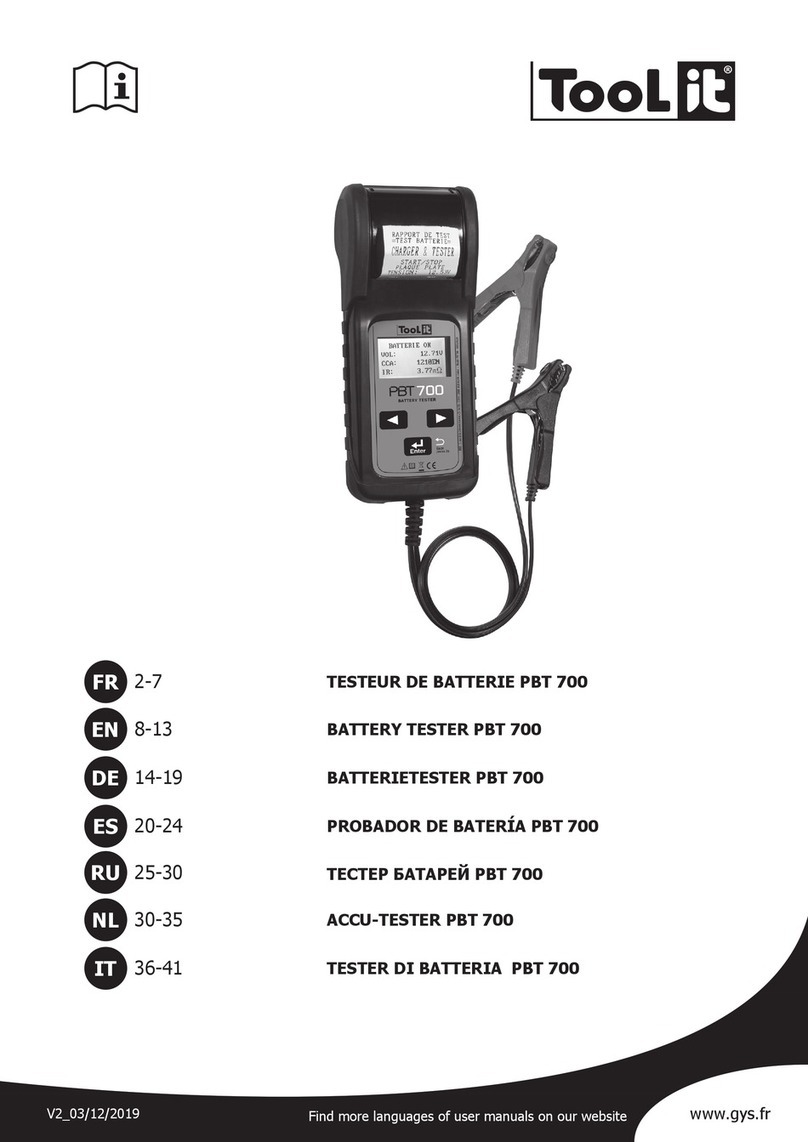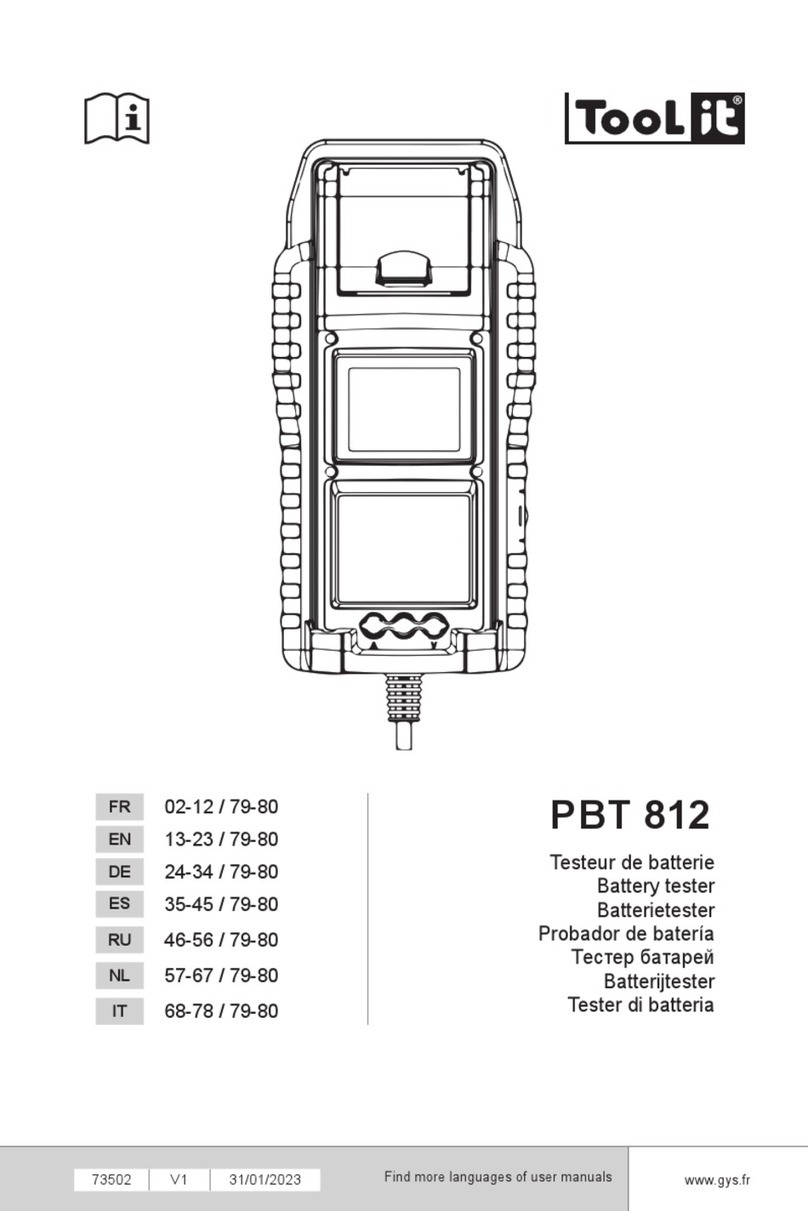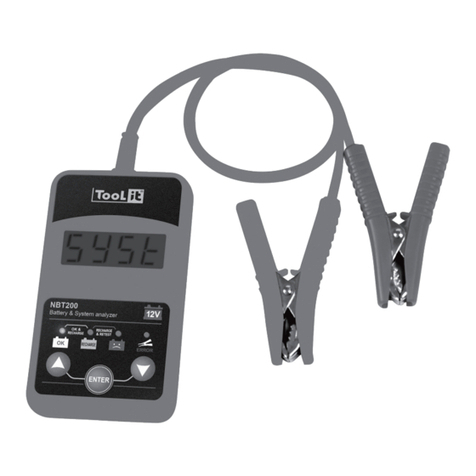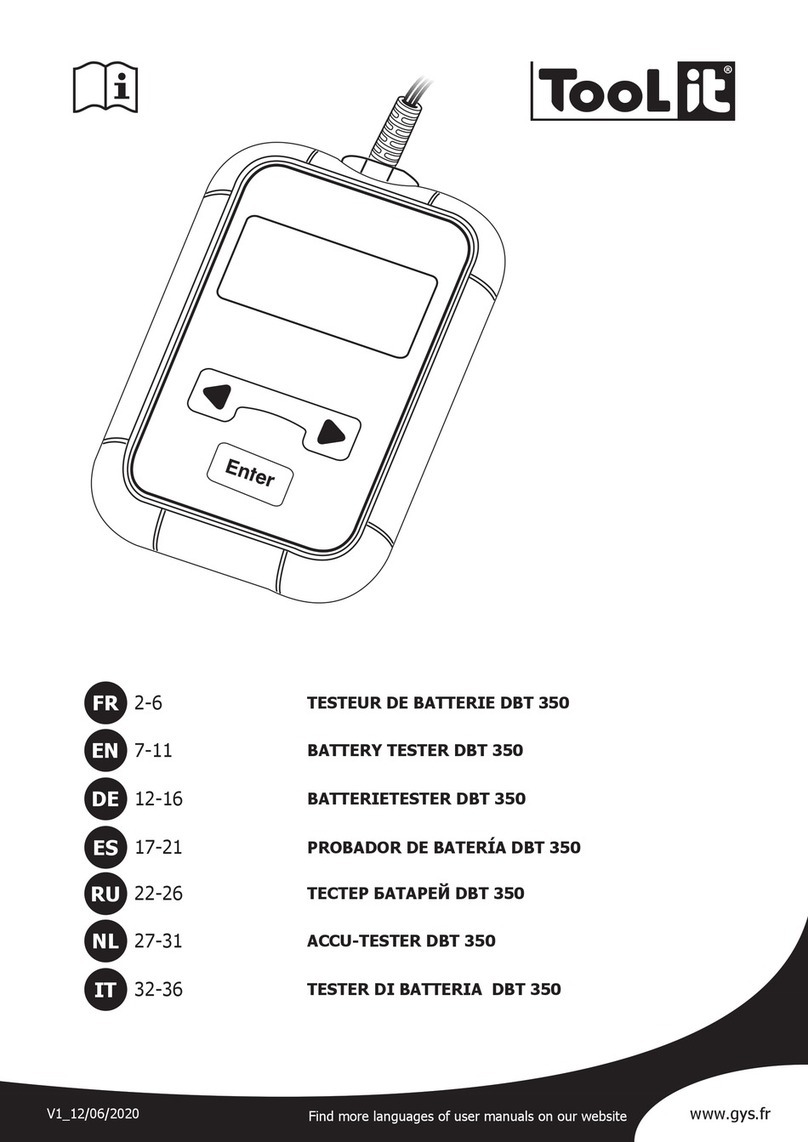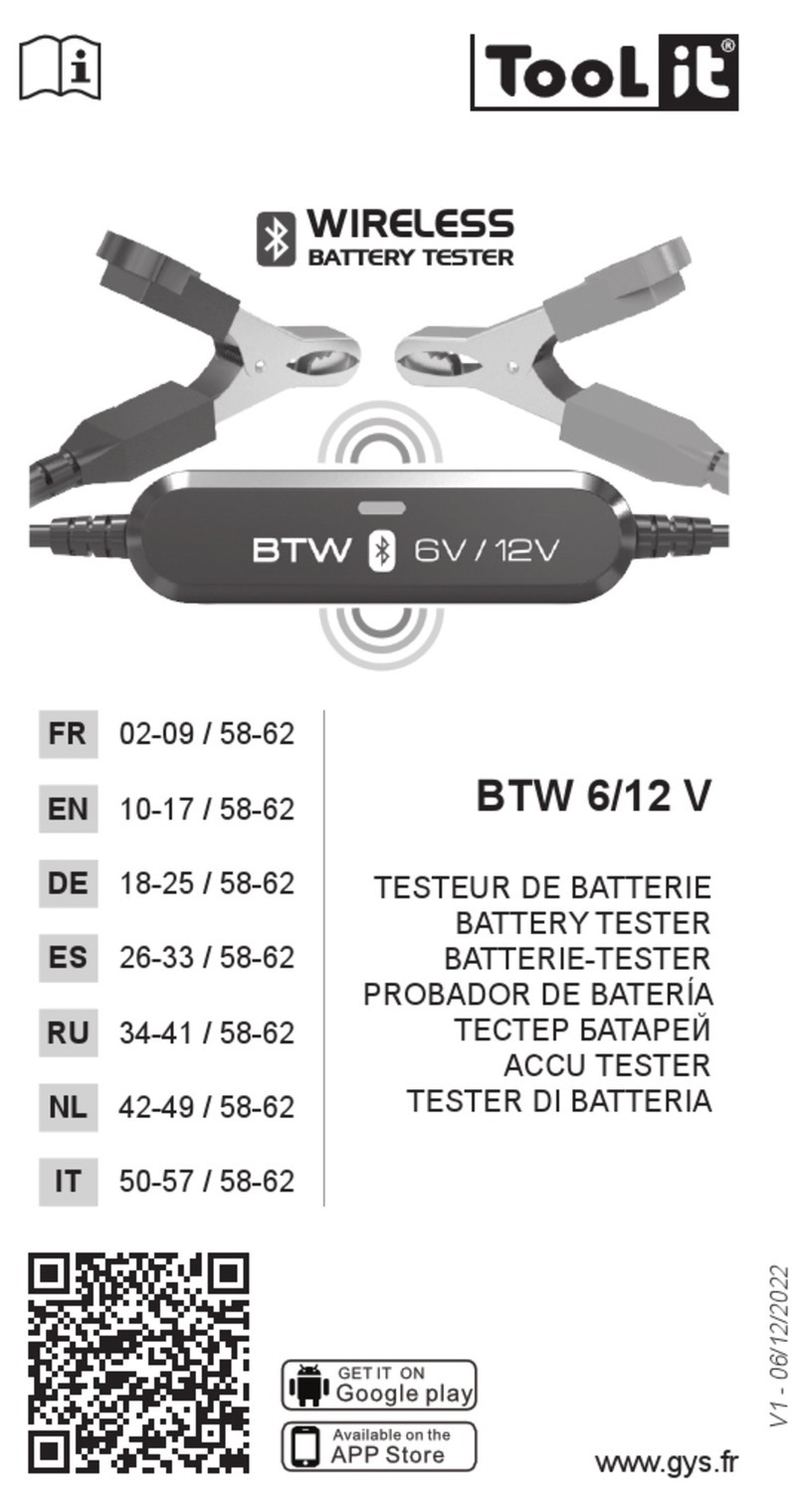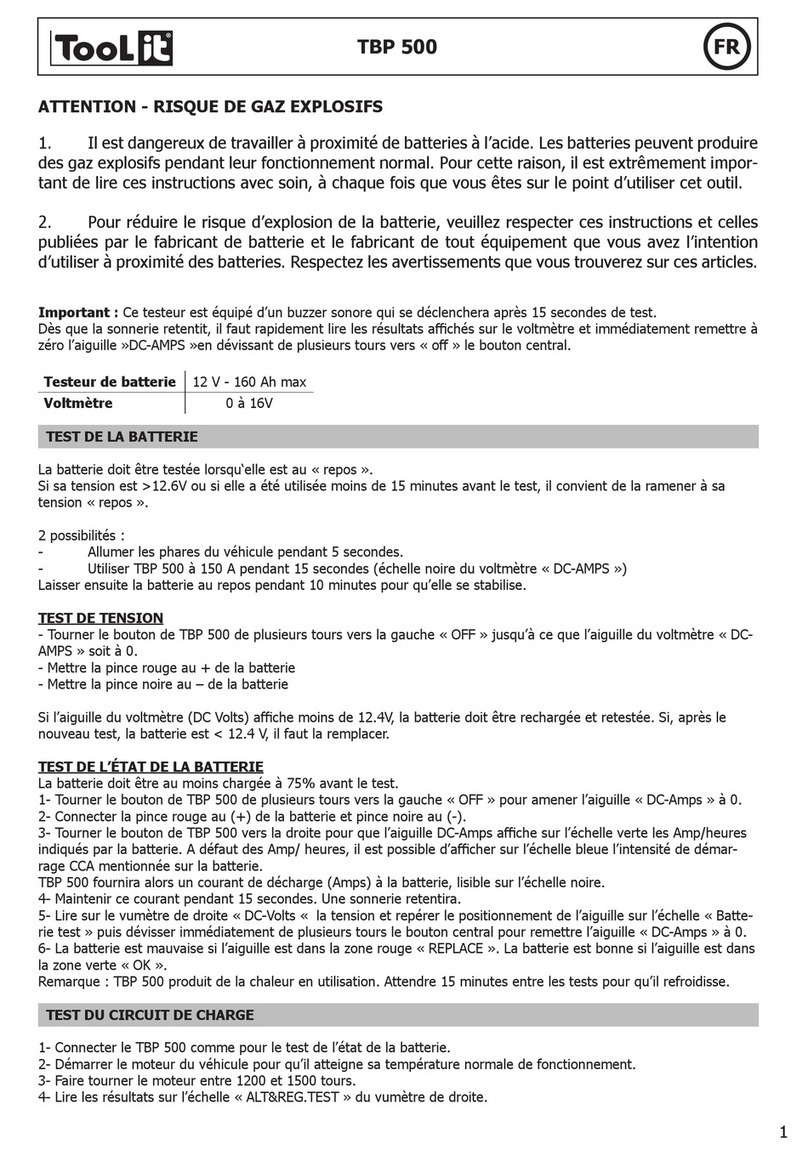
6. Faire tourner le moteur à 2500 tr/min pendant 15 secondes.
7. Appuyer sur «ENTRÉE» , l’intensité d’ondulation du cicrcuit de charge apparait. L’un des deux résultats s’ache :
Résultats trouvés Achage écran Analyse
Intensité d’ondulation normale TENSION REDR OK
xx.xx V NORMAL
Les diodes fonctionnent bien dans l’al-
ternateur/démarreur
Intensité d’ondulation haute
TENSION REDR OK
xx.xx V HAUT
OU
TENSION REDR DEF
Une ou plusieurs diodes ne
fonctionnent pas ou sont
endommagées. S’assurer que le
support de l’alternateur est bien placé
et que les courroies fonctionnent
correctement. Si c’est le cas, remplacer
l’alternateur.
8. Continuer le test en appuyant sur «ENTER». Le testeur analyse maintenant la tension de démarrage avec les
accessoires du véhicule en marche.
• Résultat du test de système de charge avec accessoires en marche
Cas Résultats achés Analyse
Haute tension de démarrage lorsque
le test est eectué avec les
accessoires en marche
TENSION ALTERNA
xx.xx V HAUT
La tension de sortie de l’alternateur est anormale-
ment élevée. Vérier qu’il n’y a pas de problèmes de
connexions. Si non, remplacer l’alternateur.
Tension de démarrage normale
lorsque le test est eectué avec les
accessoires en marche
TENSION ALTERNA
xx.xx V NORMAL La sortie de tension de l’alternateur est
normale. Aucun problème n’est détecté.
Tension basse de démarrage lorsque
le test est eectué avec les
accessoires en marche
TENSION ALTERNA
xx.xx V BAS
L’alternateur ne procure pas susamment de
courant pour la charge du système électrique et
la batterie. Vérier les courroies, et s’assurer que
l’alternateur tourne lorsque le moteur est en marche.
Si les courroies glissent ou sont brisées, remplacer
les courroies et faire le test à nouveau. Vérier la
connexion entre l’alternateur et la batterie. Si la
connexion est mauvaise, nettoyer ou remplacer le
câble et faire le test à nouveau. Si les courroies et la
connexion sont en bon état, remplacer l’alternateur.
MAINTENANCE
Cas Analyse
Ecran non allumé Vérier que l’appareil est bien connecté à la batterie
La tension de la batterie n’est pas assez importante pour réaliser le test.
Charger complètement la batterie et réessayer.
Batterie interne insusante Remplacer la pile du testeur.
CONDITION DE GARANTIE
La garantie couvre tous défauts ou vices de fabrication pendant 2 ans, à compter de la date d’achat (pièces et main
d’oeuvre).
La garantie ne couvre pas :
• Toutes autres avaries dues au transport.
• L’usure normale des pièces (Ex. : câbles, pinces, etc.).
• Les incidents dus à un mauvais usage (erreur d’alimentation, chute, démontage).
• Les pannes liées à l’environnement (pollution, rouille, poussière).
En cas de panne, retourner l’appareil à votre distributeur, en y joignant :
- un justicatif d’achat daté (ticket de sortie de caisse, facture…)
- une note explicative de la panne.
5
DBT 400 FR
Notice originale
